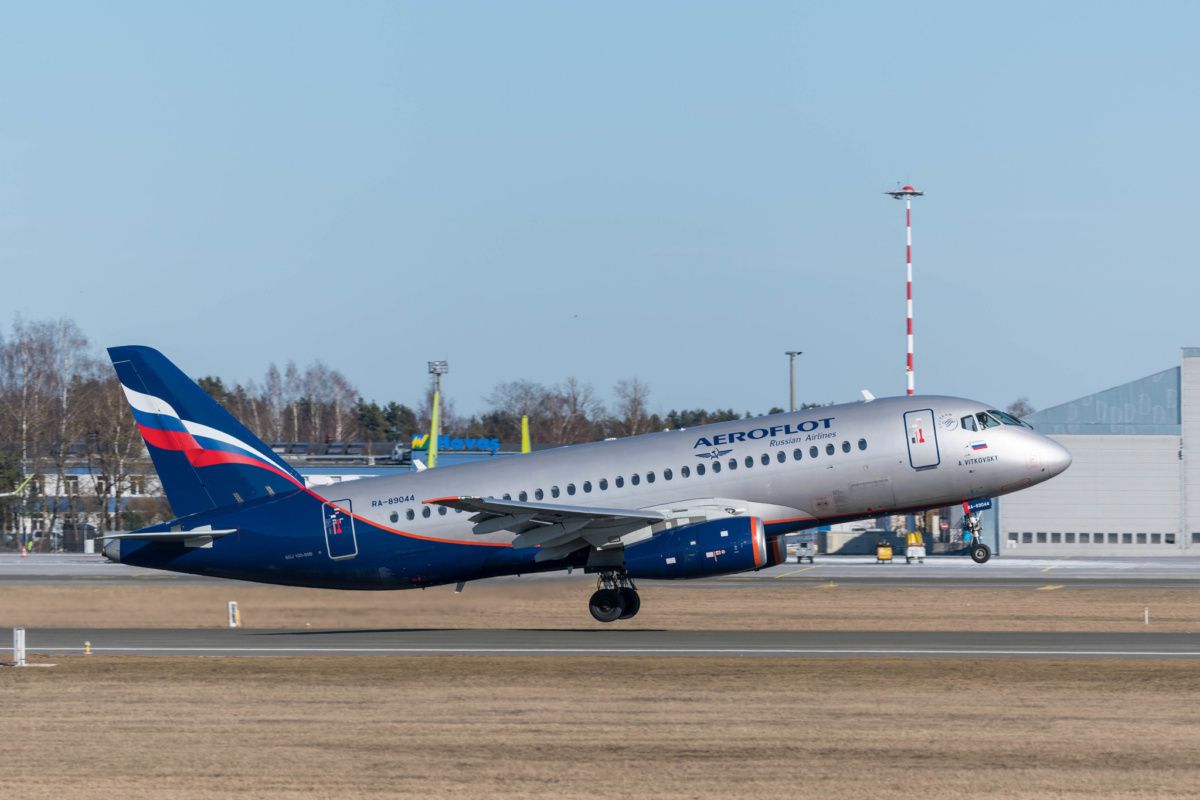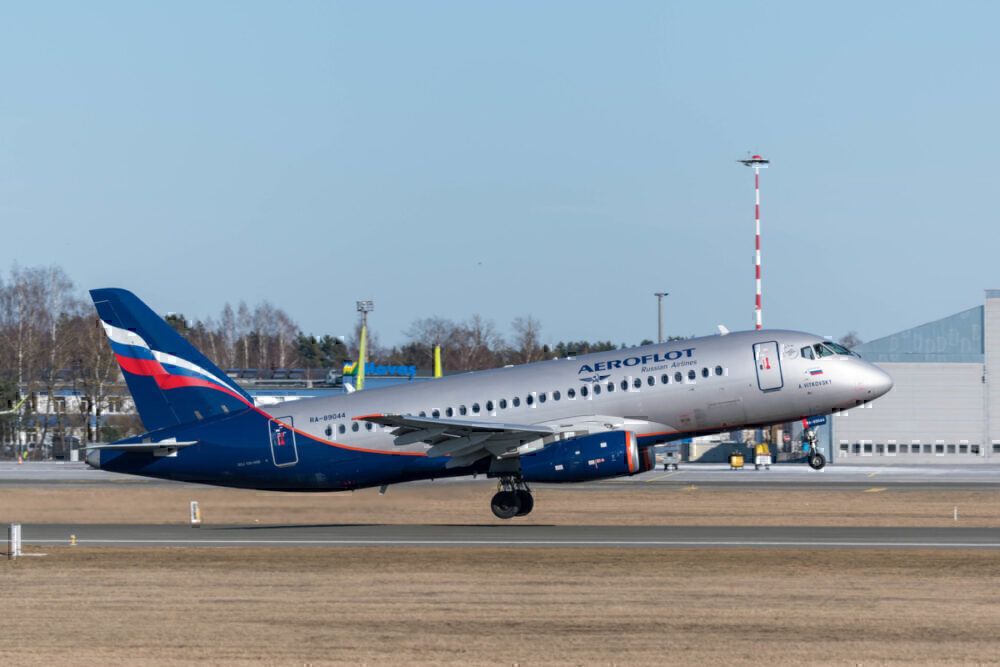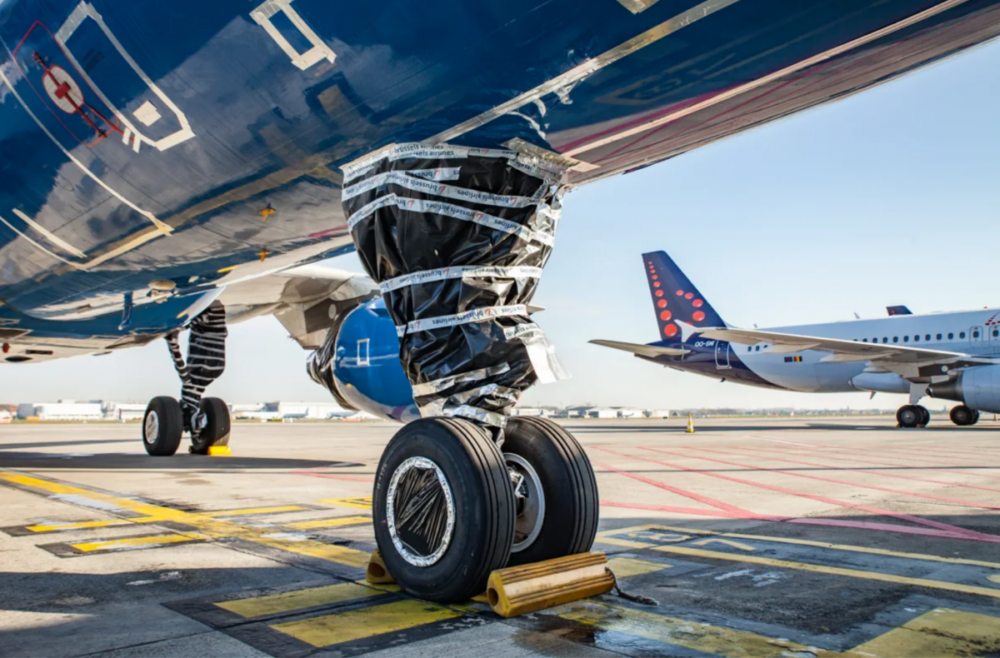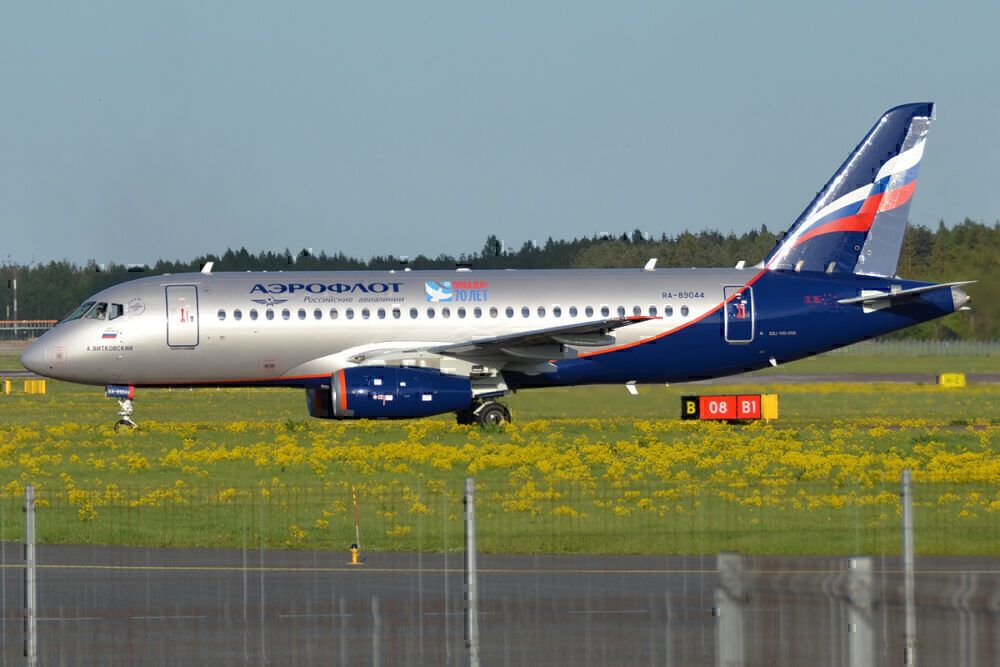Preparing an aircraft for long-term storage is a multi-step process that involves activities such as sealing any valves, ports, and openings around the jet, among many other procedures. Returning the aircraft to service is just as complex, as all the work ensuring its preservation must be undone. It seems as though some technicians at Aeroflot weren't as thorough with a Sukhoi Superjet as they should have been.
The Aeroflot Superjet SU-100-95
According to The Aviation Herald, an Aeroflot Superjet SU-100-95 was in long-term storage for roughly a month and a half, between May 3rd and July 15th. Presumably, due to market conditions improving, the jet was taken out of storage on July 15th and flew several flights through to July 29th.
It was on this day that maintenance crews discovered that the aircraft, registration RA-89044, still had silica gel packages under the cowls of both engines. Furthermore, several valves still had red tapes attached.
Stay informed: Sign up for our daily aviation news digest.
It appears that the aircraft managed to fly without incident with these items still attached. According to data from FlightRadar24.com, it seems that RA-89044 is fully active now. On August 7th, it flew five times while on August 8th, it operated another five services.
Why this matters
To prevent corrosion, bags of silica gel are placed around and inside various accessible parts of a stored engine. While these packages are meant to absorb moisture and aren't at all reactive or combustible, you wouldn't want these or any other type of object close to an aircraft engine when it's in operation.
Clearly, every port and valve on the engines and body of an aircraft have some role to play in its proper functioning. Therefore covering something like a valve would lead to less than ideal conditions for the aircraft's operation.
For example, Flight Mechanic notes that a fuel/air mixture enters the engine through the intake valve ports, while burned gases are expelled through the exhaust valve ports. If tape is attached to some of these valves, then the result could be a less-than-optimal performance of the aircraft. It could also lead to potentially disastrous consequences.
The Sukhoi SuperJet 100 and Aeroflot
According to Airfleets.net, of Aeroflot's 240 serviceable aircraft, it currently has 54 SuperJets. 42 of these are listed as 'Active' while 12 have a 'Parked' status. Aeroflot has been taking delivery of these jets steadily since 2013, with its newest delivered to the airline in January 2020.
Thankfully, the errors in returning this jet to service did not result in any disastrous consequences, and this will hopefully serve as a wake-up call for the airline and its maintenance teams.
What do you think of this incident? Does it affect your willingness to fly with the airline? Let us know in the comments.




